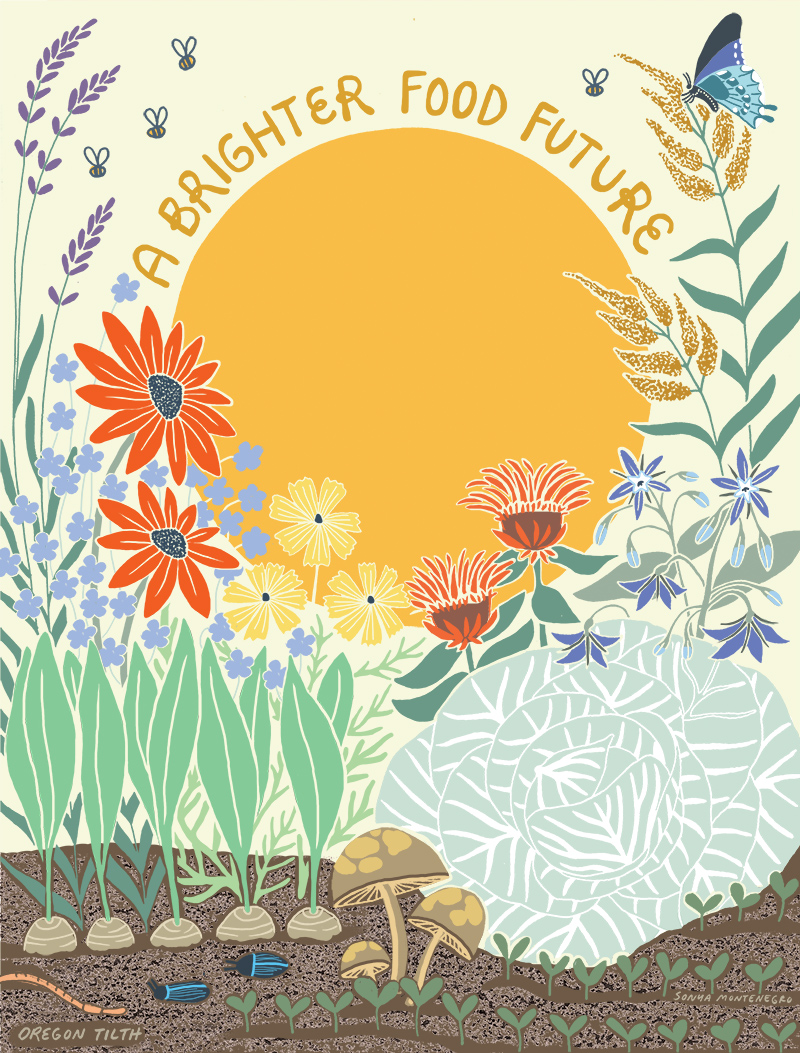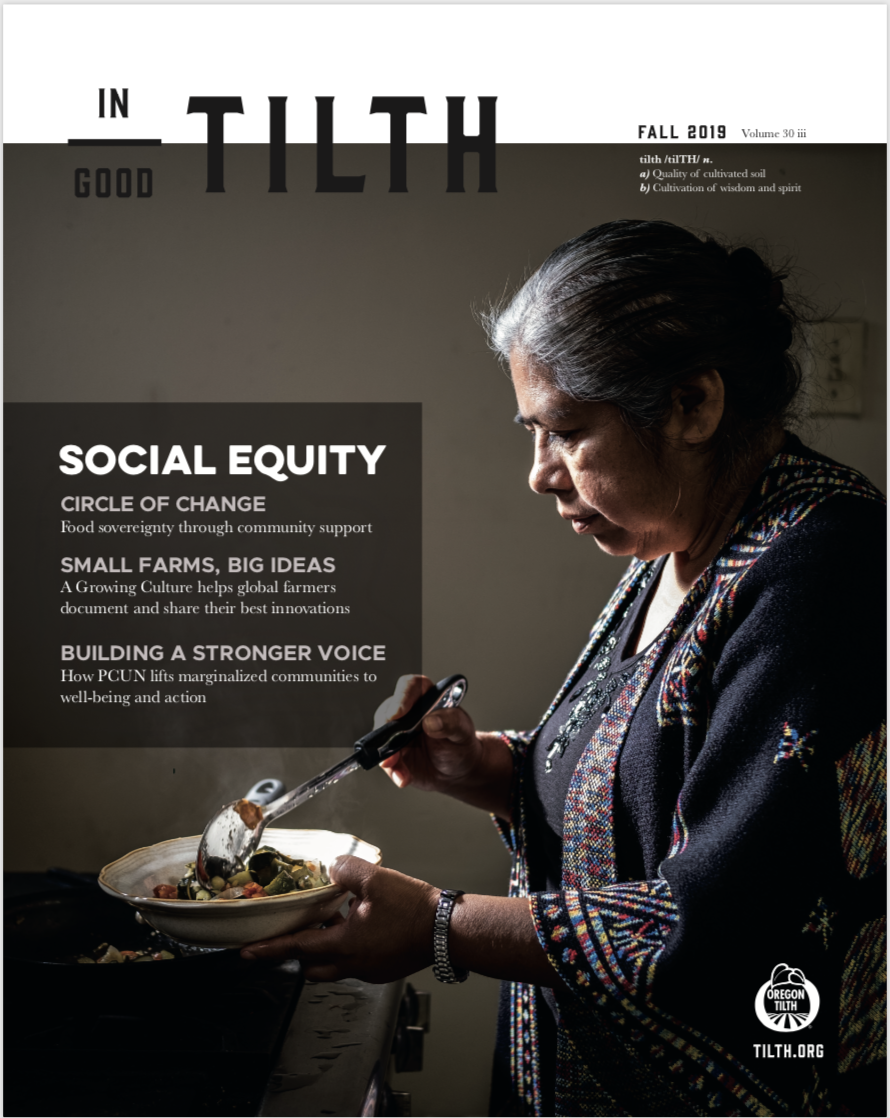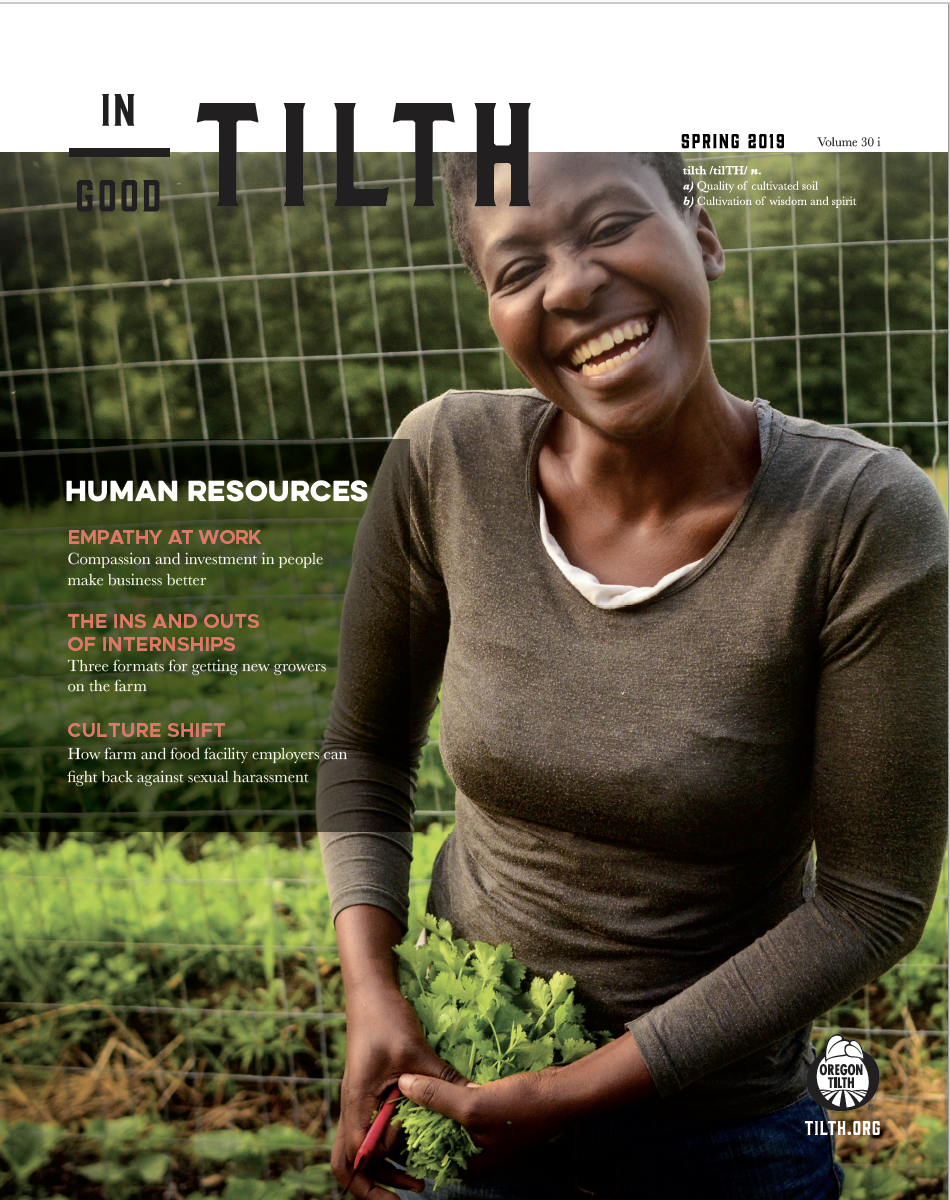Two hundred years ago, most Americans had a profoundly different way of knowing their foods. They knew it well. With 95 percent of the population living in rural areas, eating local was the norm. Food knowledge — firsthand and personal — lay just out the backdoor.
Consider a circa 1790 dinner: the meat at the center of the meal came from an animal raised in nearby pastures and was slaughtered by a family member out back. The green peas were grown from saved seeds in the bucket-watered garden by the creek. Eggs came from clucking hens in the barnyard. Huckleberries ripened atop a sunny knoll and stained the hands of their pickers. Mother baked bread with wheat grown by her sons. Cooks and eaters around a table could tell a story for nearly every bite taken.
How we know foods changed drastically in the late 19th century as cities grew and our food systems rapidly expanded to meet urban appetites. Newly built railroads, feedlots and industrial abattoirs made it possible for faceless food companies to supply anonymous meat from a thousand miles away. While historic cookbooks had urged cooks to know about the age, sex and diet of the animals that became their meats, this traditional food knowledge soon became obsolete, if not repugnant. Likewise, the shiny new technology of tin cans pushed former limits of perishability, giving us year-round access to fruits and vegetables though making it impossible for homemakers to use traditional sensory cues to know if the food inside was ripe and wholesome.
As distance between farms and kitchens grew, so too did food fraud. Homemakers encountered flours bulked up with sawdust, underweight packages and fake jams made with hayseeds and dyes. A federal study in 1890 found that one in six “manufactured foods” were not what was claimed. Educators became alarmed that kids growing up in cities would be the first generation to not know where their foods came from, leaving them ill-prepared to discern what was genuine.
In response, Progressive-era activists started some of our nation’s first food-literacy initiatives. They pressed Congress to enact the Pure Food and Drug Act of 1906, which required food labeling for the first time. They also started school gardens, giving tens of thousands of city kids the experience of growing vegetables.
Meanwhile, to address persistent skepticism about distant steaks and enigmatic cans, food companies cultivated the new medium of advertising to ease Americans into new ways of knowing about packaged foods. Ads redirected homemakers’ attentions from the places and particulars of foods’ provenance, posited new meanings for “fresh” and “natural,” and persuaded us that modern and factory-made was better than homemade. By the 1920s, food companies had convinced most homemakers to leave the complexities of food preparation to professionals and to instead embrace a new role as “consumers.”
Brand names became the most important element of food knowledge, abetted by more ethereal notions of how products make us feel — savvy, fit, loving, loved. Along the way, manufactured foods even became associated with fictional characters such as Betty Crocker and Aunt Jemima, conveying trustworthiness to allay anxieties that homemakers felt about the intrusion of industry into their homes.
The literal and figurative distance between food producers and consumers gave cover for agriculture to change in big ways. As consumers stopped paying attention to their foods’ origins, new nitrogen fertilizers fostered consolidation of small family farms into big businesses; antibiotics allowed for the development of intensive animal agriculture; and chemicals invented as weapons in wartime were unleashed on crops to battle pests — increasingly common on large-scale farms — with little concern for health or ecological effects. By the 1960s and ’70s, when headlines reported DDT in human blood and breast milk, many Americans had become resigned and didn’t even want to know the stories of their foods.
This was the ignorance that many of us grew up thinking was normal.
Fortunately, a small but vigorous group of organic farmers and activists recognized the perils of the industrialized food system’s opaque production methods and worked to build an alternative network of co-ops and farmers’ markets to deliver pesticide-free produce. Recognizing the crucial role of food literacy in empowering consumers to make choices in the marketplace, they doggedly pressed for organic labeling at a regional and, ultimately, a national level.
The resulting rise of organic foods, farmers’ markets and CSAs has directed consumer attention back to farms and farmers and launched crucial dialogues in communities all across America. As more people question what purpose our dominant industrial food system serves, history provides useful perspective. The food system evolved with the “invisible hand” of the market to feed rapidly growing cities, to create cheap foods and to make profits for food companies — not necessarily to provide fresh, healthful foods or to steward land and water. That begs the question: what kind of food system could we have if more people knew the real stories of their foods? What would we do differently if food knowledge not only focused on calorie content, brand name and price but also encompassed the health of the soil, the well-being of workers, the treatment of animals and sustainable farm practices?
Today’s food-literacy movement has grown to recognize the remarkable possibilities that spring forth with a citizenry better educated about their food choices. GMO labeling and country-of-origin labeling could enable consumers to better influence farm and food production practices. Nowadays, school gardens not only assure that kids know where their carrots come from, but they also teach about links between food, farming and health. Some become catalysts for connections between local farms and school lunch programs that serve to rebuild regional-scale food systems, providing for fresh fruits and vegetables, and also stronger rural economies.
The dominant industrial food monolith still depends on consumers being kept in the dark. But with more and more people seeking to know the true stories of their foods, the food literacy movement is making fresh history, laying the groundwork for a more sustainable path from farm to plate for the future.
























